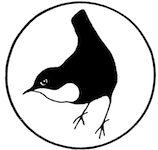Saturday 21 September 2019, 09.15 to 13.30
Summary
Willington Gravel Pits is situated in the Trent Valley and is managed by Derbyshire Wildlife Trust. There are various viewing platforms and a hide overlooking the flooded gravel workings. The day was warm and sunny for our first visit here since 2016.
The first couple to arrive spotted a Marsh Harrier and we later saw a Peregrine and a couple of buzzards. We had good, though fleeting, views of Hobbies and Kingsfishers. For most of our time in the hide, we had it to ourselves, keeping our eyes on the channels around the hide in case a Water Rail or Bittern should appear. It wasn’t our day for those species but, in addition to those seen on and over the gravel pits, there was a steady flow of birds to the nearby feeders and to the wooded area surrounding them, including a Great Spotted Woodpecker. We also heard a Cetti’s Warbler in the reedbeds.
Members participating: 7
Bird list (41 species seen and/or heard)
| Little Grebe | Hobby | Robin |
| Great Crested Grebe | Peregrine | Blackbird |
| Cormorant | Moorhen | Cetti’s Warbler |
| Grey Heron | Coot | Chiffchaff |
| Mute Swan | Lapwing | Long-tailed Tit |
| Greylag Goose | Black-Headed Gull | Blue Tit |
| Canada Goose | Lesser Black-Backed Gull | Great Tit |
| Wigeon | Greater Black-Backed Gull | Magpie |
| Gadwall | Woodpigeon | Carrion Crow |
| Mallard | Kingfisher | Starling |
| Pochard | Great Spotted Woodpecker | Chaffinch |
| Tufted Duck | Swallow | Goldfinch |
| Marsh Harrier | Wren | Reed Bunting |
| Buzzard | Dunnock |


